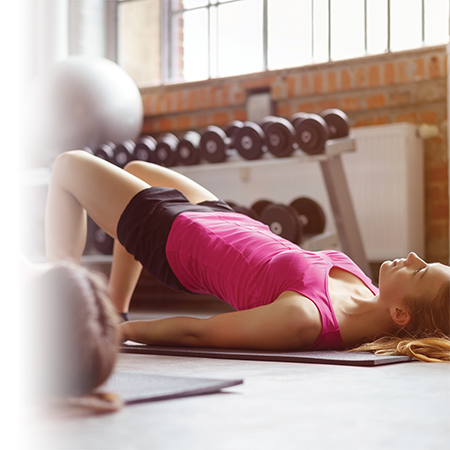Ladies, you have probably already heard about perineal re-education or Kegel exercises, but do you know if they could be useful to you?
The pelvic muscles
All women experience some difficulties of an intimate nature at some point in time. They would like to have access to simple and easy solutions. This text addresses one of these solutions: perineal re-education (or pelvic re-education), an approach that helps to reinforce pelvic muscles.
The pelvic floor muscles form a structure found at the base of the pelvis. They extend from the base of the pubis to the coccyx, supporting the organs located in the lower abdomen somewhat like a hammock. It is the deepest area of the perineum. The anal, urethral, and in women, the vaginal orifice are found in this area of the body.
The pelvic muscles are involved, among other things, in micturition (urination) and in the passage of intestinal gas and stool. They help to stabilize the body and are important for the sexual function.
Kegel exercises
When speaking of perineal re-education, we often refer to Kegel exercises. This is a technique that can be practised on your own, at home or elsewhere, to reinforce pelvic muscles. Although relatively easy to grasp, this technique still requires some training. If you wish to learn about Kegel exercises, speak to a qualified healthcare professional (such as a physiotherapist).
In the beginning, it is important to ensure that the proper muscles are being used. The muscles that you should be "flexing" are those that contract when you hold back urine or a bowl movement. Once you have mastered the exercises, you can practise them in a sitting or lying position, at your convenience.
The main reasons for using these exercises
When the pelvic floor muscles are atrophied, weakened or too tense, this can contribute to various problems. Kegel exercises can be beneficial in some cases. Here are some examples.
Genital prolapse
Genital prolapse is defined by the descent of an internal organ (bladder, uterus, rectum, etc.) in the pelvic area. It results from stretched or weak muscles and ligaments that support the organs. The pelvic floor reinforces this support from beneath.
This problem occurs more frequently in women, after menopause. Strengthening pelvic muscles can prevent genital prolapse and help to resolve the problem in mild cases.
Bladder leakage
When pelvic muscles are firm or contracted, they compress the urethra (the tube by which urine passes); therefore, helping to hold back urine in the bladder. Conversely, when these muscles are weakened or relaxed, leakage may occur.
Women who experience urinary incontinence could benefit from trying Kegel exercises to strengthen supporting muscles, which will help keep the urethra closed and to prevent leakage.
Gas and fecal incontinence
Normally, the perineum helps to retain intestinal gas and stool. A dysfunctional perineum can lead to uncontrolled and embarrassing evacuation of gas and fecal incontinence. Perineal re-education can also help with this problem.
Pain
Overly tense pelvic muscles can cause pain, for instance, during the passage of stool or during sexual intercourse. In this case, perineal re-education can include massaging or other techniques likely to relax the muscles.
Post-natal period
During pregnancy and natural childbirth, the perineum is put to the test. Perineal re-education helps to prevent and correct problems typically observed after childbirth, including bladder leakage and pain.
Advanced age and menopause
As women age, and especially after menopause, they are more likely to experience certain problems in the pelvic area (vaginal dryness, pain, bladder leakage, genital prolapse, etc.).
Obesity
Obesity is a risk factor for several health problems, including genital prolapse and weak bladder.
Some advice
If you decide to include Kegel exercises in your daily routine, here is some advice:
- For optimal results, integrate three exercise sessions into your day, 3 to 4 times a week. Do 8 to 15 contractions at each session. Hold each contraction for about 6 to 8 seconds, then relax muscles for 10 seconds. After 3 to 4 months of regular exercises, you should notice an improvement. These numbers are provided only as a general guideline. Ask your healthcare professional to give you clear instructions adapted to your situation.
- It is completely normal if you find these exercises difficult in the beginning. Perseverance is key. The muscles are weakened, but they will strengthen, and it will become easier over time.
- Make it a habit to do these exercises at the same time as other daily activities (e.g., while you watch the news), so you won’t forget to do them.
- Once you have reached your goal, continue your daily exercises, so as not to lose their benefits.
Don’t hesitate to speak to your pharmacist if you have any questions related to women’s health.

